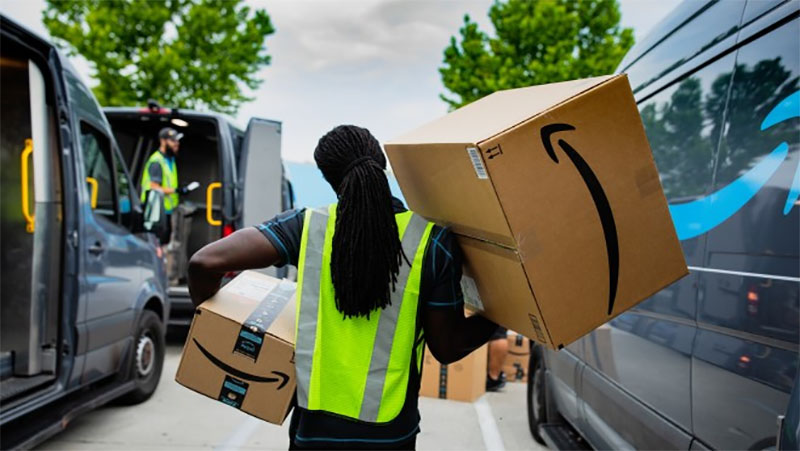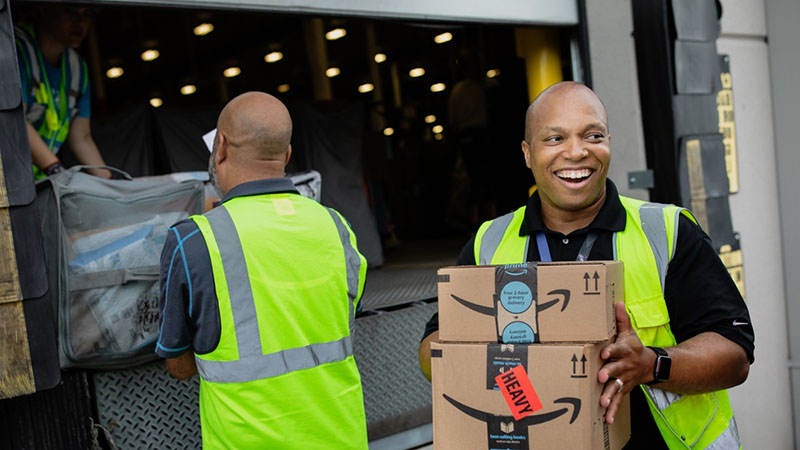Amazon Drivers Risk Increasing Number Of Injuries

Study shows that nearly one in five Amazon delivery drivers suffered injuries in 2021- again raising safty concerns about conditions for drivers
Amazon is once again facing questions over its workforce practices, after a new study revealed a rise in injuries for its delivery drivers.
Entitled the ‘Worst Mile‘, the report is by the Strategic Organising Centre (SOC), which is an organisation made up of four trade unions. The report alleged that nearly one in five Amazon delivery drivers suffered injuries in 2021 – an increase from the year before.
The report stated that Amazon’s delivery arm, Amazon Logistics, is likely to become to the largest parcel carrier in the US in the first half of 2022.

Delivery injuries
However Amazon also relies on a fast-growing network of contracted delivery companies to ferry packages to customers’ doorsteps.
But like many other such organisations, the Strategic Organising Centre report alleged Amazon often sacrifices safety for speed, and that delivery drivers “have had to sacrifice their bodies to meet the company’s aggressive production demands.”
It analysed data submitted by Amazon and its delivery partners to the Occupational Safety and Health Administration in 2021.
“SOC’s analysis found that drivers for Amazon DSPs experienced one injury per five full-time-equivalent workers in 2021 – a nearly 40 percent increase above the previous year’s injury rate,” it alleged.
This is despite Amazon beginning installing AI-enabled cameras in its delivery vans to increase safety, in February 2021.

The SOC report alleged that as of 2021, Amazon changed the way that it classified its facilities for purposes of reporting injury data, to distinguish between parts of its operations that it believes are part of the “General Warehousing and Storage” industry and those that are part of the “Couriers and Express Delivery Services” industry.
The SOC report apparently focuses on Amazon’s delivery system, including both the facilities that Amazon classifies in the “Courier and Express Delivery Services” industry and the company’s last mile delivery contractors.
“The workers in Amazon’s delivery system work at one of its facilities as direct employees, deliver packages as gig workers via Amazon’s Flex app, or drive for one of Amazon’s delivery contractors, which Amazon calls Delivery Service Partners (DSPs),” it said.
Drivers hired by Amazon DSPs likely account for half of all Amazon delivery system workers in the United States, yet the company does not include these drivers in its public reporting of injury rates, the report noted.
SOC’s analysis found that “drivers delivering packages for Amazon DSPs were injured at an astounding rate of nearly one injury per five full-time-equivalent workers in 2021 (18.3 per 100 workers) – a nearly 40 percent increase above the previous year’s injury rate.”
Delivery stations
Meanwhile delivery stations, the facilities where Amazon workers prepare packages for delivery, continue to be the most dangerous type of Amazon facility, with average injury rates more than 40 percent higher than the company’s already dangerous warehouses.
Amazon’s delivery system facilities overall, as reported without DSPs, remain more dangerous than the rest of the industry, with injury rates 13 percent higher than the non-Amazon industry average, the SOC report alleged.

It alleged that Amazon is not serious about safety safety, and “sets unmanageably high quotas for delivery drivers.”
As an example, it found that during peak times, Amazon expected a DSP operator in Sacramento to deliver 350-400 packages per day per van.
To complete this number of deliveries in a 10-hour shift, drivers would need to park, sort, deliver, and document a delivery approximately once every 1 to 2 minutes – presuming they do not take any breaks.
Safety improvements
In January, Amazon disclosed it spent $300 million on worker safety improvements in 2021.
It said the rate of employees who missed work due to workplace injury dropped by 43 percent in 2020 from the prior year.
And earlier this year, Amazon CEO Andy Jassy said in his first letter to shareholders that Amazon’s injury rates were “a little lower than the average of our courier and delivery peers.”
SOC alleges that claim is “misleading on multiple levels” because it uses outdated data and excludes Amazon’s network of DSP drivers.

According to the report, Amazon delivery drivers commonly suffer injuries from trips, slips and falls, strains, dog bites, vehicle accidents and striking an object.
Last October legal action began in the UK for thousands of drivers delivering items for Amazon, stated the drivers receive normal staff entitlements.
In April 2021 Amazon apologised to a US politician for denying that its workers are at times forced to pee in public bottles.
At first Amazon denied the claims, but after journalists published evidence of its delivery drivers having to urinate in bottles, it apologised.
Amazon said issues with drivers being able to find a toilet whist en route was a “long-standing, industry-wide issue”.